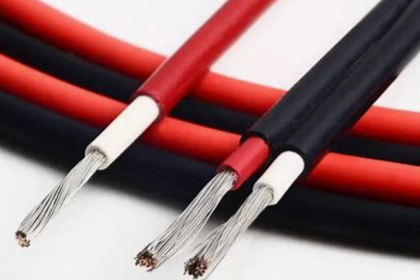That radiant orb in the sky, has been a source of inspiration and energy for ages. As we harness its power through photovoltaic systems, the importance of reliable and efficient solar cables cannot be overstated. Let’s delve into the world of PV wires, specifically focusing on En50618 solar cable and solar cable 4mm2, and discover how they contribute to the effectiveness of solar energy systems.

The backbone of any solar energy system is the cable that connects the panels to the inverter and beyond. These cables are not just ordinary wires; they are designed to withstand the harsh outdoor conditions and deliver power reliably. En50618 solar cable, for instance, is a standard that ensures the cable is fit for purpose, providing durability and safety. The ‘solar cable 4mm2’ refers to the cross-sectional area of the conductor, which is crucial for determining the cable’s current-carrying capacity.
The Significance of Solar Cable Standards
When we talk about En50618 solar cable, we’re discussing a set of specifications that define the quality and performance of solar cables. These standards are not just guidelines; they are the benchmarks that ensure the cables can handle the rigors of outdoor exposure, temperature fluctuations, and the weight of solar modules. The En50618 standard is particularly important because it covers the requirements for solar cables used in photovoltaic power generation systems. It ensures that the cables are made from materials that resist UV radiation, ozone, and chemical influences, which are common in outdoor environments.
The Role of Cross-Sectional Area in Solar Cables
The term ‘solar cable 4mm2’ is often mentioned in the context of the cable’s ability to handle electrical current. The cross-sectional area of 4mm2 means that the cable can handle a significant amount of current, which is essential for larger solar installations. A larger cross-sectional area reduces the resistance in the cable, allowing more current to flow through without a significant loss of energy. This is particularly important in solar systems where efficiency is key to maximizing energy output.
Understanding UL Solar Cable
UL stands for Underwriters Laboratories, a globally recognized safety certification company. When we mention UL solar cable, we’re referring to cables that have been tested and certified by UL to meet specific safety standards. These cables undergo rigorous testing to ensure they can perform under various conditions without posing a risk of fire or electrical failure. UL certification is a mark of quality and safety, giving installers and users confidence in the performance of the cables.
The Importance of Material Composition
The materials used in solar cables are as important as their specifications. High-quality solar cables are made from materials that are resistant to environmental degradation. For En50618 solar cable, the materials must be able to withstand not only the elements but also the mechanical stress from the weight of the solar panels. The insulation and jacketing of these cables are typically made from materials like cross-linked polyethylene (XLPE) or ethylene propylene rubber (EPR), which offer excellent resistance to UV radiation, moisture, and temperature extremes.
Temperature Ratings and Their Impact
The temperature rating of a solar cable is another critical factor to consider. Solar cables are often exposed to high temperatures, both from the environment and the heat generated by the solar panels themselves. A cable with a high temperature rating, such as 90°C or 120°C, can operate safely and efficiently in these conditions. This is particularly important for solar cable 4mm2, as larger cables can generate more heat due to their lower resistance. Ensuring the cable can handle high temperatures is crucial for maintaining the integrity of the solar system and preventing potential failures.
Longevity and Durability
When investing in a solar energy system, longevity is a key consideration. Solar cables need to last as long as the panels themselves, which is typically 25 years or more. En50618 solar cable is designed with this in mind, using materials and construction methods that ensure the cable will not degrade over time. The durability of the cable is also important for withstanding the physical wear and tear of installation and the environmental conditions it will be exposed to throughout its service life.
Installation and Maintenance
The ease of installation and maintenance is another aspect where solar cables, such as solar cable 4mm2, shine. These cables are designed to be easy to handle and install, with features like a flexible jacket that allows for easier routing and reduced stress on connections. Maintenance is also simplified with cables that are resistant to common issues like corrosion and abrasion. This means less downtime and lower maintenance costs over the life of the solar system.
The Future of Solar Cables
As technology advances, so do the specifications and capabilities of solar cables. We’re seeing the development of even more efficient and durable cables, with improvements in material science and manufacturing techniques. The future of solar cables looks bright, with innovations that will further enhance the performance and reliability of solar energy systems.
In conclusion, the world of solar cables is an intricate one, with specifications like En50618 solar cable and solar cable 4mm2 playing a critical role in the performance and safety of solar energy systems. Understanding these specifications and the importance of quality materials and certifications like UL is essential for anyone involved in the installation or maintenance of solar systems. As we continue to rely on solar energy as a clean and renewable source, the role of solar cables will only grow in importance.




